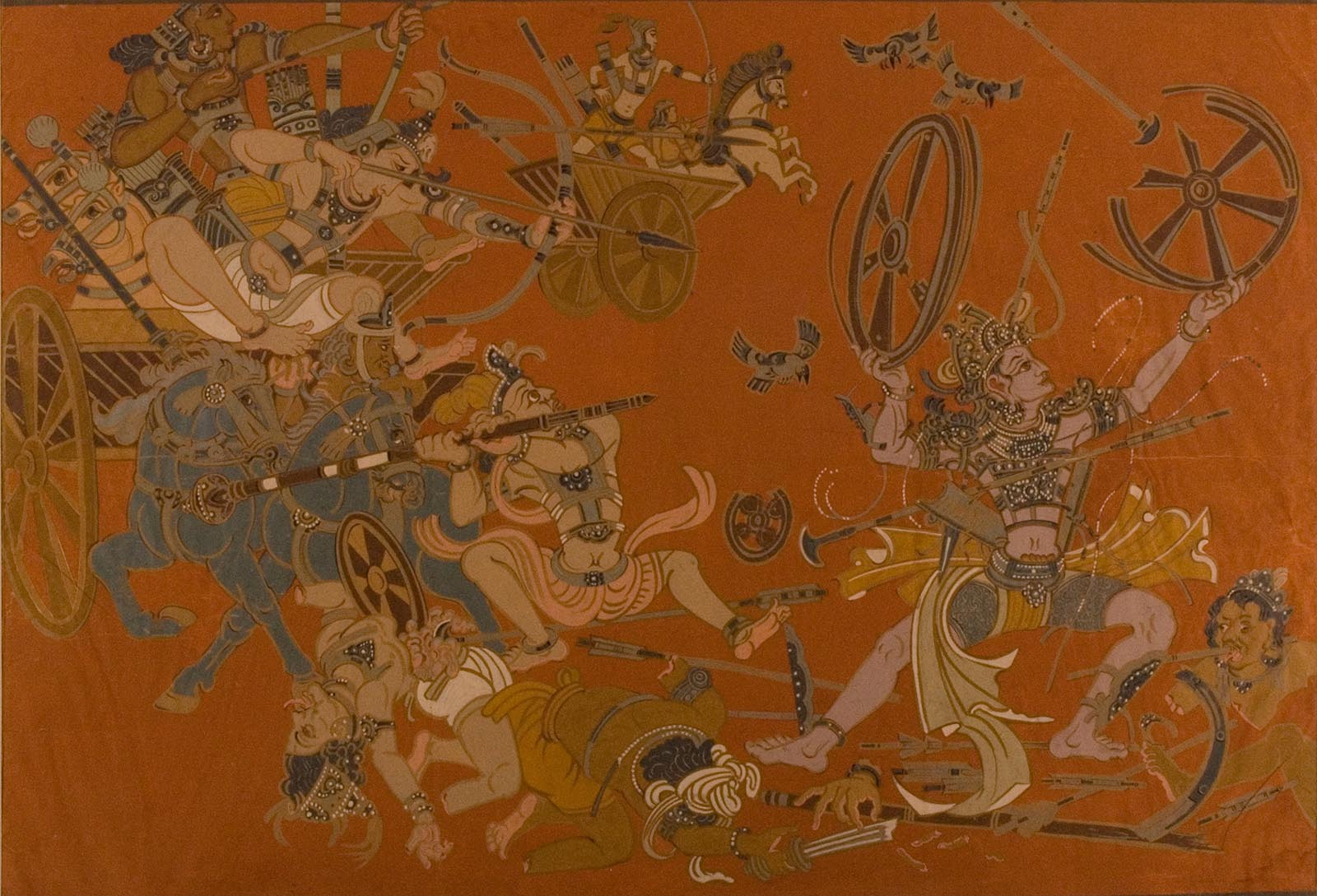ARTICLE
Nandalal Bose
In 1930, when Gandhi launched the Dandi March, Bose commemorated the event with a linocut image of him with his walking stick, which has become an archetypical image since. On Gandhi’s request, he also made a number of posters for the Haripura Session of the Indian National Congress in 1938, drawing on the art traditions, celebrations and everyday scenes of rural India. He also illustrated Rabindranath Tagore’s book collection Sahaj Path (first published in 1937) with linocut prints. Bose also produced a number of paintings in his distinctive idiom, among which was the celebrated work, Sabari in Her Youth (1941–42), depicting a scene from the Ramayana in which a young girl, possibly of indigenous background, is perched upon the branches of a tree waiting for Rama to redeem her.
Inspired to revive the mural painting tradition of India, he produced important works such as the landscape Bagadar Road (Hazaribagh) (1943) — rendered in tempera, like the frescoes at the Ajanta Caves, which it sought to pay tribute to — and Abhimanyu Vadh (1946–47), a narrative scene from the Mahabharata that portrays the entrapment and killing of the mythological hero, Abhimanyu. In 1946, he also created wall murals for the Kirti Mandir, a memorial for Mohandas and Kasturba Gandhi in Baroda.
Among the many testaments to his commitment to building a visual and cultural national identity was the original manuscript of the Constitution of India (enacted in 1950), which he, along with his students, hand-illustrated. Jawaharlal Nehru, India’s first prime minister, famously requested Bose to design the emblems of the Government’s highest civilian awards — the Padma Shri and the Bharat Ratna — underlining Bose’s status as an artist at the forefront of a newly independent India.
Most of his paintings are held today by the National Gallery of Modern Art, New Delhi, and in private collections in India and abroad. Bose’s public participation in nationalist discourses, his pedagogic contributions and the wide visibility of his art positioned him among the most influential new Indian Modernists. A recipient of the Padma Vibhushan in 1954, Bose was also awarded a Fellowship of the Lalit Kala Akademi in 1956, an honorary DLitt from the University of Calcutta in 1957 and the Tagore Birth Centenary Medal by the Asiatic Society of Bengal in 1965. In 1993, the Government of India issued a postage stamp of Bose’s painting Pratiksha to commemorate his birth centenary.
Bibliography
Our website is currently undergoing maintenance and re-design, due to which we have had to take down some of our bibliographies. While these will be re-published shortly, you can request references for specific articles by writing to hellomapacademy@map-india.org.








